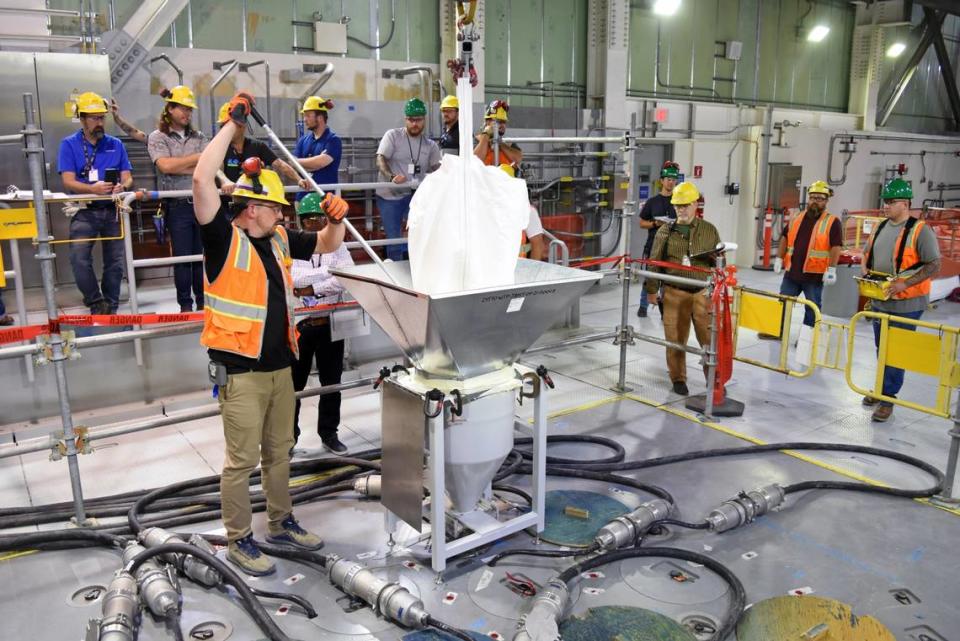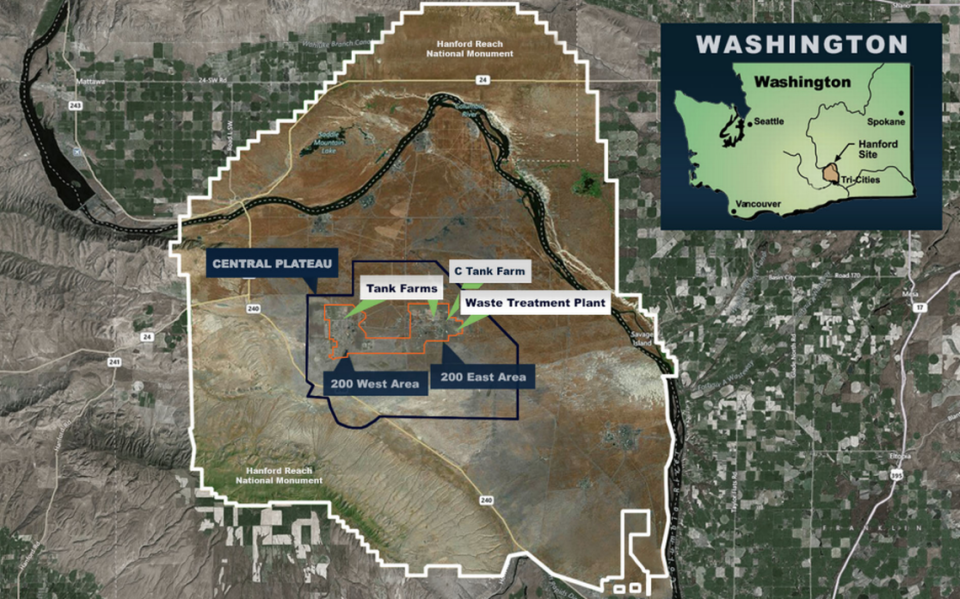Technical troubles halt new tests at huge Eastern WA radioactive waste melter
The Department of Energy is unlikely to meet a deadline set by a federal court for the next step to prepare the Hanford site’s vitrification plant to treat radioactive waste for disposal.
On Thursday DOE notified the Washington state Department of Ecology that it was at risk of not meeting the Aug. 1 deadline to start cold commissioning of the plant, a test of vitrification using nonradioactive chemicals to simulate waste before radioactive waste is introduced into the plant.
DOE is asking the Department of Ecology to agree to a four-month extension to Nov. 29 of this year.
“The process for commissioning this first-in-kind facility is comprehensive and dynamic,” said DOE Hanford Manager Brian Vance in a message to Hanford employees Thursday.

He said the delay was a caused by “relatively minor equipment issues” that DOE wants to fix before introducing chemicals to simulate radioactive waste into the vitrification plant’s Low Activity Waste Facility.
DOE remains committed to starting treating radioactive waste by the federal court consent decree deadline of August 2025, Vance said, despite the shortened time proposed between the start of cold commissioning and introducing radioactive waste into the plant for hot commissioning.
DOE broke ground 22 years ago on the vitrification plant at the Hanford nuclear reservation to turn much of the 56 million gallons of radioactive and hazardous chemical waste stored in underground tanks into a stable glass form for disposal.
The waste is left from chemically processing uranium fuel irradiated at the Hanford site adjacent to Richland in Eastern Washington to produce nearly two-thirds of the plutonium for the nation’s nuclear weapons program from World War II through the Cold War.

The current plan is to begin treating some of the least radioactive tank waste next year as DOE continues to work toward meeting a consent decree deadline to also start treating high level radioactive waste in the tanks by 2033.
The 2010 consent decree resulted from a Department of Ecology lawsuit over legal deadlines that DOE had missed or was near certain to miss. The consent decree deadlines originally called for cold commissioning to treat both low activity radioactive waste and high level radioactive waste to begin in 2018.
Consent decree deadlines have been extended several times over the last 14 years, including to allow DOE more time due to work delays caused by the COVID pandemic.
The Department of Ecology said Thursday morning that it was reviewing the notification from DOE, which also was sent to Oregon.
If the Department of Ecology agrees to the extension, the federal court must then sign off on the change.
Technical issue at Hanford plant
DOE told the Department of Ecology in its notification Thursday that it has had technical issues with the glass former system at the vitrification plant’s Low Activity Waste Facility.
Glass forming materials are planned to be mixed with waste and then heated to fill canisters with a molten glass mixture. After cooling, the radioactive waste will be immobilized and ready for disposal.

The glass forming material is trucked to 12 vertical tanks outdoors at the vitrification plant in central Hanford. From there horizontal pipes with a screw conveyor are used to move the solid glass forming material into vessels inside the plant before the glass forming material and waste or waste simulant are added to melters.
There have been problems with clogging as the system has been used so far to move 40,000 pounds of glass forming material into the plant.
The issue with the glass forming system is the main reason DOE has asked for a deadline extension, but it also has some other issues it is addressing at the vitrification plant that might interfere with the Aug. 1 deadline to start cold commissioning.
Other issues are with the thermal catalytic oxidizer, the steam plant Morrison tubes and the overall reliability of the mechanical handling system, DOE told the Department of Ecology.
The delay comes as DOE and its vitrification plant contractor Bechtel National have been making progress on preparing to treat waste at the vitrification plant.

The Low Activity Waste Facility has both its melters operating, and both have successfully melted glass and filled containers with glass.
The first shipment of 10,000 gallons of the simulated waste, which is liquid sodium hydroxide, has been delivered to the vitrification plant for the start of cold commissioning after technical issues with the glass forming system are resolved.
DOE initially talked to the Department of Ecology in April about technical challenges to start cold commissioning, but at that time it was uncertain about a possible schedule delay. Federal and state officials met again earlier this week before DOE submitted its request for a deadline extension.
DOE said that the commissioning process for the complex waste treatment plant is being done methodically for good reason. It is responsible for the safety of plant workers and for protecting the plant as a valuable federal asset, it said.
It has overcome other technical issues as it has worked to commission the plant, including overheating in the power supply system for the melter heaters and a melter cooling panel leak.


